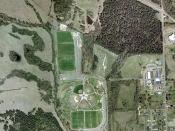IntroductionWorking in a team teaches individuals to recognize the advantages of teamwork and cooperation and to identify and understand the stages of team development (Levack, 2007). For a team to achieve its goals, its members must do more than just carry their own weight. They must involve, support, and share information with their teammates. And they must commit to the success of the entire team, not simply their own success (Levack, 2007). Working as a team clearly teaches everyone involved the personal, interpersonal, and organizational advantages of working together, whether in teams or work groups (Jones, 2006).
Working in a team helps individuals understand and appreciate the value of different skills, abilities, and motivations (Argent, 2007). Everyone looks at things in a unique way. Today, the companies with the greatest competitive advantage are those that can make the most of their people's diverse abilities (Jones, 2006). Valuing differences gives people effective tools for appreciating others' unique perspectives, understanding people's differences, and collaborating in a mutually beneficial way (Jones, 2006).
There are several different aspects that make up a team. This paper will focus on the structure of a team and the importance of communication.
Team DynamicsWorking in a team requires good team dynamics. What are team dynamics? Team dynamics can typically be defined as the underlying mechanics that come into play in a team, between different people as well as different groups (Jones, 2006). It is how people work together, brainstorm together and make decisions together. Team dynamics can strongly impact how a team reacts, behaves or performs. It can also determine if the team is successful or not (Eckle, 2007).
Team StructureThe JobWhat is the job at hand? What needs to be completed? Is this an IT related project or is this something with a social background? What types...

![Rosalie Jones' Army [Suffragettes] (LOC)](https://s.writework.com/uploads/17/172375/rosalie-jones-army-suffragettes-loc-thumb.jpg)
